Apple Music vs Spotify: An Audiophile's Perspective

TL;DR: Audiophiles crave more than convenience—they want uncompromised sound. This blog compares Apple Music vs Spotify sound quality, explaining how compression, lossless formats, and gear affect fidelity. Learn which platform delivers the best listening experience and how to optimize your streaming setup with Moon Audio gear.
- Lossy vs. Lossless: Apple Music offers lossless (ALAC), while Spotify remains lossy (Ogg Vorbis).
- Technical Specs Matter: Bitrate, bit depth, and sample rate shape sound fidelity.
- Spotify Streaming Quality: Maxes at 320 kbps with no lossless tier (yet).
- Apple Music Streaming Quality: Supports Hi-Res Lossless up to 24-bit/192kHz.
- Side-by-Side Comparison: Apple Music outperforms Spotify on sound quality and resolution.
- Optimization Tips: Use a DAC, go wired, disable EQ/normalization, and match gear to use case.
- Streaming vs. Local Files: Local files offer ultimate fidelity, but Apple Music’s lossless streaming comes close.
- Verdict: Apple Music is currently the best audio quality streaming service for audiophiles.
- Pro Tip: Enhance your streaming experience with audiophile gear from Moon Audio.
In the streaming age, most music fans are looking for one thing: convenience.
But audiophiles are different.
For true music fans and audio professionals, sound quality remains the most important metric when choosing a streaming service. As more and more mainstream apps allow lossless files, choosing the right one becomes increasingly challenging.
Does streaming compromise fidelity for accessibility, and which service delivers the best sound quality?
In this guide, we aim to answer that question by comparing Apple Music vs Spotify sound quality once and for all. While both offer massive libraries, curated playlists, and intuitive interfaces, they take vastly different approaches to audio quality. For audiophiles and music pros who invest in high-end gear, understanding how these platforms handle music compression, bitrate, and lossless formats is critical.
In this guide, we’ll break down Apple Music vs Spotify sound quality and explore the impact of lossless music streaming. Plus, we’ll compare the technical specs that matter most to discerning ears. Keep on reading to figure out which platform delivers the listening experience your audiophile-grade gear deserves!
Understanding Streaming Audio Quality
Before we can explain the differences between Apple Music vs Spotify sound quality, you’ll need to understand what factors make music sound its best. Streaming services can either preserve or strip away the sonic detail that makes your favorite track sound rich, intricate, and life-like.
So, what’s the difference between high-quality streaming and low-quality streaming, and why should you care?
First, check out Moon Audio’s Ricky Kovacs breaking down some music streaming basics. Then we’ll dig into the nuances below.
Lossy vs Lossless Audio
The majority of streaming music fans aren’t audiophiles. Most listeners prioritize smooth playback over the internet, whether in the car or at the gym. To casual listeners, access is more important than playback quality. As a result, many popular streaming services rely on compressed audio formats to reduce file size.
What is Lossless Audio? Guide to Audio Formats
We’ve discussed lossy and lossless audio formats on the blog before, but here’s a quick refresher:
- Lossy formats compress audio by permanently removing data deemed less critical to human hearing. While this reduces file size, it also compromises clarity, dynamics, and overall richness of sound. This is most noticeable on high-end audio systems.
- Lossless formats retain all the original audio data. This means every nuance and detail is preserved. This is audiophile-grade quality music that sounds its best on a high-end system.
When comparing Spotify streaming quality to Apple Music streaming quality, this distinction is important. Apple Music now offers lossless music streaming using ALAC (Apple Lossless Audio Codec). In contrast, Spotify, despite announcing a HiFi tier, still only streams in lossy formats.
Bitrate, Bit Depth, and Sample Rate
Three technical specs shape audio fidelity in addition to compression: bitrate, bit depth, and sample rate. Here’s how we define them:
- Bitrate (measured in kbps) determines how much data is transmitted per second. Higher bitrates generally equate to better sound quality.
- Bit depth affects the dynamic range (or how well loud and soft sounds are captured). CD quality uses 16-bit, while hi-res audio reaches up to 24-bit.
- Sample rate reflects how often the audio signal is measured per second. Standard CD audio is 44.1kHz. Many hi-res files can go up to 192kHz.

As a general rule, the higher these values, the closer you are to an audiophile-worthy, studio-quality listening experience.
With that said, you can’t appreciate these nuances without audiophile-grade gear. Detailed, lossless audio always sounds best on a system that can handle it. A dedicated DAC and audiophile-grade headphones are crucial here.
Top DACs and Headphones
Spotify Streaming Quality: A Refresher

Spotify is the world’s most popular streaming service. Its intuitive interface, curated playlists, social features, and cross-platform availability are unmatched. Plus, who doesn’t love (or dread) their annual Spotify Wrapped? However, most audiophiles agree that Spotify streaming quality leaves something to be desired.
We already took a deep dive into Spotify Streaming Quality on the blog, but we’ll remind you of the key points here:
Compression and Codec
Spotify uses the Ogg Vorbis codec for audio streaming, a lossy format. Ogg Vorbis is designed to provide a balance between file size and audio quality. That’s a compromise that most casual listeners can live with.
Audiophiles? Not so much.
The maximum available bitrate for Spotify Premium users is 320 kbps. Spotify’s free-tier users stream at lower bitrates. Those are typically between 96–160 kbps, depending on the user’s device.
What does this mean for sound quality? In general, audiophiles agree Ogg Vorbis provides a narrow soundstage and muddy transients. They find their favorite tracks are missing the tonal subtleties they crave. When listening with high-end gear, the deficits are even more obvious.
Music File Formats and Tips for Seamless File Transfer
Still No Lossless Audio
In 2021, Spotify announced a Spotify HiFi tier with lossless music streaming. They promised CD-quality audio for Premium subscribers. Alas, patient audiophiles are still waiting. As of the time of writing, Spotify still does not offer lossless streaming at any membership tier.
EQ and Volume Normalization
Spotify implements algorithmic equalization (EQ) and volume normalization, which can further interfere with sonic purity. It both flattens dynamics and interferes with coloration.
With that said, users can adjust these in their settings menus to tailor their experience. Even so, many audiophiles consider this a statement about Spotify’s priorities. Clearly, the platform values convenience over audio fidelity, even at the Premium tier.
Spotify on Audiophile Gear
With the right gear and some careful customization, Spotify can still produce great sound. However, when compared with lossless formats, especially on high-end equipment, the differences become apparent. Ultimately, Spotify can’t offer the experience audiophiles crave without implementing a Hi-Fi or lossless music tier.
Apple Music Streaming Quality: What Sets It Apart

Now, how does Apple Music streaming quality compare? First of all, unlike Spotify, Apple Music has taken major steps toward delivering audiophile-grade streaming quality. The platform offers both lossless audio and Hi-Res Lossless formats.
In other words, if you value sound quality over algorithms and social features, Apple Music is a clear winner. Here are all the reasons why it may be the best audio-quality streaming service.
AAC to ALAC: Apple’s Audio Evolution
Apple Music’s default format is AAC (Advanced Audio Codec), a lossy format that streams at 256 kbps. Although it’s efficient, it’s still a lossy format, which means audiophiles will likely find it lacking.
However, in 2021, Apple introduced lossless music streaming at no additional cost. The platform now supports standard lossless audio (16-bit/44.1kHz) and Hi-Res lossless audio (up to 24-bit). The Hi-res audio uses a format called ALAC (Apple Lossless Audio Codec).
Unlike AAC or MP3, ALAC maintains the full dynamic range, depth, and spatial accuracy of a track.
It’s also worth noting that Apple Music supports Spatial Audio with Dolby Atmos, which offers immersive, surround-like experiences. For most audiophiles, however, ALAC remains the gold standard.

Compatibility and Hardware Considerations
ALAC is Apple’s proprietary lossless format. As a result, it’s baked directly into Apple Music and iOS/macOS software. That means Apple devices offer native support for ALAC files. In other words, Apple users don’t need third-party apps or plugins to play lossless audio.
However, Apple devices do not natively support high-res levels of resolution through their headphone jacks or Lightning ports. That means ALAC files require an external DAC capable of handling 24-bit playback.
If you’re ready to upgrade your setup, Moon Audio offers a wide selection of portable and desktop DACs. We have plenty of high-end options that seamlessly pair with Apple Music for pristine playback.
Apple Music Sound Quality vs Spotify: Side-by-Side Comparison
Let's break down how Apple Music sound quality vs Spotify compares across the specs that matter most to audiophiles.
Apple Music

- Uses AAC (256 kbps) by default
- Offers lossless audio via Apple Lossless Audio Codec (ALAC)
- Supports Hi-Res Lossless up to 24-bit/192kHz
- Compatible with external DACs for full-resolution playback
- Provides Spatial Audio and Dolby Atmos support
- Works across iOS, macOS, Android, and select desktop setups
- Requires wired headphones or a DAC for true lossless performance
Spotify

- Uses Ogg Vorbis, a lossy codec
- Maxes out at 320 kbps for Premium users
- No lossless option available (Spotify HiFi still unreleased)
- Lower resolution caps dynamic range and sonic detail
- Not compatible with Hi-Res audio playback
- Works across all platforms, including smart devices and web players
- Still sounds good with a decent DAC, but fidelity is limited by compression
So, what’s the verdict on the Apple Music vs Spotify sound quality debate? For those who value lossless music streaming, high-resolution audio, and maximum signal integrity, Apple Music is the best audio quality streaming service. In comparison, Spotify doesn’t quite unlock the full potential of audiophile-grade equipment.
We’ll continue to keep an eye out for Spotify’s promised lossless membership tier. Until then, Apple Music reigns supreme.
Optimizing Playback: Tips for Audiophiles and Music Professionals
Apple Music and Spotify are only as good as the gear and settings you use to access them. Optimizing your listening setup ensures you’re hearing everything the artist intended. Here are our tips for achieving the streaming quality you crave.
Use a Dedicated DAC
Incorporating a Digital-to-Analog Converter (DAC) into your setup is the first step toward achieving audiophile-grade sound while streaming. Basic onboard DACs often downsample or introduce noise.
A high-quality DAC can improve clarity, reduce jitter, and create a more defined soundstage. That’s true even for music in lossy formats. For lossless listening, a DAC that supports up to 24-bit/192kHz is essential.
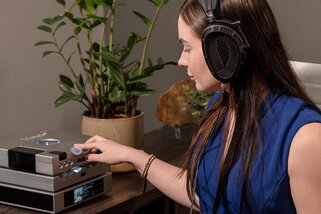
DACs: Entry-Level to Endgame
Disable Volume Normalization & EQ Settings
Both Apple Music and Spotify apply default processing that can degrade your listening experience. We recommend disabling algorithmic volume normalization and EQ in your streaming app settings. It’s a simple way to achieve cleaner, more natural sound.
Go Wired Whenever Possible
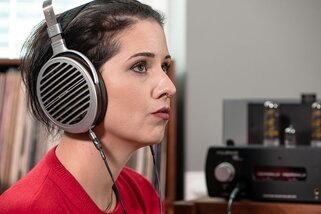
Even the most advanced forms of Bluetooth audio are technically compressed. For true lossless music streaming, a wired connection is a must. Moon Audio’s Dragon headphone cables are handcrafted to minimize resistance. They’re capable of revealing sonic detail often masked by factory stock headphone cables.
Dragon Audio Cables: Headphones
Match the Streaming Platform to the Gear and Use Case
If you’re listening casually or on the go, Spotify’s flexibility and UI may be enough. For critical listening, however, Apple Music’s lossless and Hi-Res options deliver the best streaming experience available today. With that said, if you're mixing or mastering, stream your work on both platforms to hear how compression affects your music across services.
Choose the Right Headphones for Streaming
Pairing the right headphones with the right platform is crucial for a high-fidelity streaming experience. Ultimately, the right headphones are the pair that delivers the experience you crave. Use open-back headphones for a wider soundstage and accuracy at home. Opt for closed-back or IEMs for detail and isolation on the go.
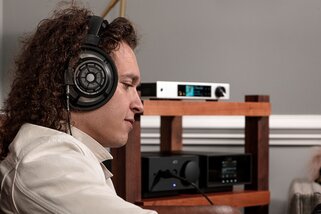
Headphones & IEMs
Choosing Between Streaming vs. Local Files
For listeners using the right gear, Apple Music’s lossless streaming offers near-indistinguishable quality from local files. However, you might want to opt for local files if:
- You own Hi-Res audio files and want full control over playback
- You want to avoid buffering, data compression, or software-level volume normalization
- You're in a studio or critical listening environment where bit-perfect playback matters
Essentially, local files remain the gold standard for uncompressed, uninterrupted playback, but Apple Music comes close.
Which is the Best Audio Quality Streaming Service?
If sound quality is your top priority, Apple Music comes out ahead. With lossless and Hi-Res Lossless audio, it’s currently the best mainstream option for high-fidelity streaming. For those seeking the best audio quality streaming service, Apple Music delivers both convenience and uncompromised clarity.
Spotify still offers an enjoyable and polished experience. However, its lossy compression and lack of a lossless music streaming tier limit its appeal to serious listeners.
That said, both platforms can sound excellent when paired with the right gear and configured properly. The key is to match your setup to your listening goals.
Upgrade your sound with top-tier audio gear at Moon Audio. Browse our selection of headphones, DACs, DAPs, Cables, and more for superior listening.
Sound Wars: 5 Ways we Tested Qobuz to other Music Streaming Services
Moon Audio strives to provide the most relevant collection of curated audiophile products for our customers. Our reviews and product guides are designed to inform our community and share our passion for audio technology. Whether you're just starting out or a seasoned professional, we're glad you joined us.
Want more? Sign up for curated content in your inbox.

BY: DREW BAIRD P.E. |
Read Time: Approx. 10 min. TL;DR: Sub-$2K Flagship Performance: Both the U6t and U12t IEMs deliver exceptional value under $2,000... Read more
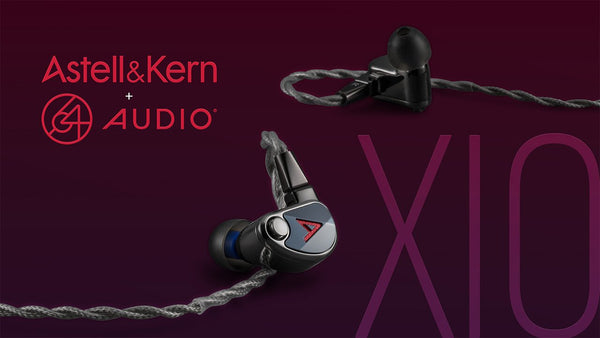
BY: DREW BAIRD P.E. |
Read Time: Approx. 16 min. When Audio Giants Collide–Astell&Kern x 64 Audio's $3k Masterpiece Every audiophile has that dream collaboration,... Read more
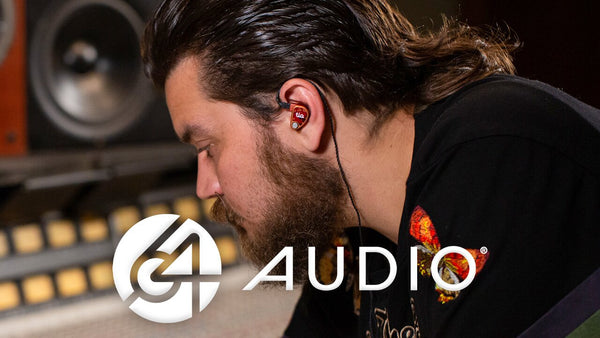
BY: DREW BAIRD P.E. |
Read Time: Approx. 20 min. TL;DR First tubeless IEM design with proprietary TIA (Tubeless In-Ear Audio) technology for natural sound... Read more

BY: DREW BAIRD P.E. |
Read Time: Approx. 20 min. TL;DR First Astell&Kern DAP with full Android OS and Google Play Store access: Download any... Read more

BY: DREW BAIRD P.E. |
Read Time: Approx. 17 min. TL;DR Groundbreaking digital audio player that functions both as a premium portable DAP and as... Read more

BY: DREW BAIRD P.E. |
Read Time: Approx. 10 min. TL;DR: For the best portable audio, invest in a dedicated Digital Audio Player (DAP) that... Read more
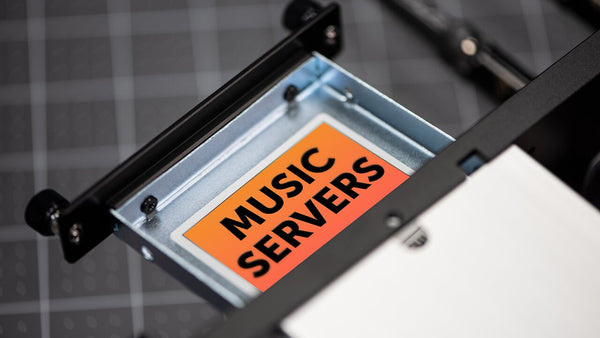
BY: DREW BAIRD P.E. |
Read Time: Approx. 11 min. TL;DR Music servers centralize your entire digital collection, storing and organizing ripped CDs, purchased digital... Read more

BY: DREW BAIRD P.E. |
Read Time: Approx. 16 min. TL;DR Multi-functional component combining a music streamer, music server, DAC, and Preamp in one unit... Read more

BY: DREW BAIRD P.E. |
Read Time: Approx. 12 min. TL;DR You need BOTH a DAC and an Amplifier in every audio system: DAC handles... Read more
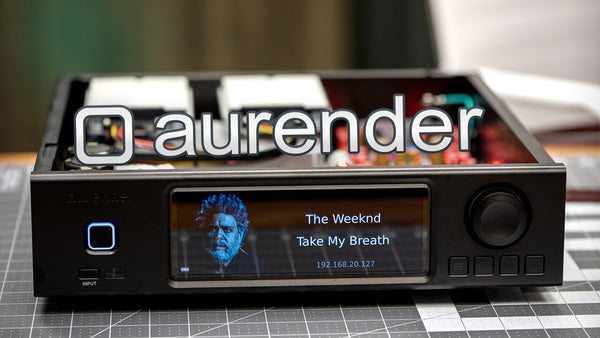
BY: DREW BAIRD P.E. |
Read Time: Approx. 25 min. Investment in Sound: Aurender's Price-to-Performance Ratio Across Models Beginning with its first music server nearly... Read more

BY: DREW BAIRD P.E. |
Come See Us in Booth 8101 Moon Audio is heading to the 14th annual Audio Expo North America (AXPONA) and... Read more
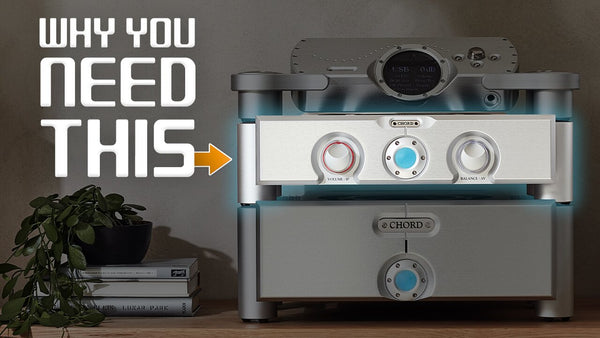
BY: DREW BAIRD P.E. |
Read Time: Approx. 9 min. TL;DR Preamplifiers are always necessary: They boost weak audio signals to line level for proper... Read more

BY: DREW BAIRD P.E. |
Read Time: Approx. 12 min. TL;DR You need BOTH a DAC and an Amplifier in every audio system: DAC handles... Read more
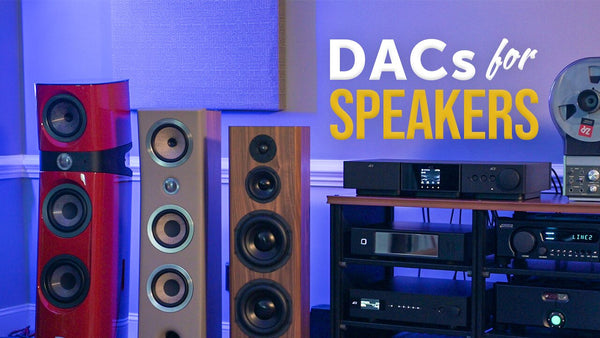
BY: DREW BAIRD P.E. |
Read Time: Approx. 10 min. TL;DR: Unlock your audiophile speakers' full potential with the right external DAC and amplifier. This guide... Read more
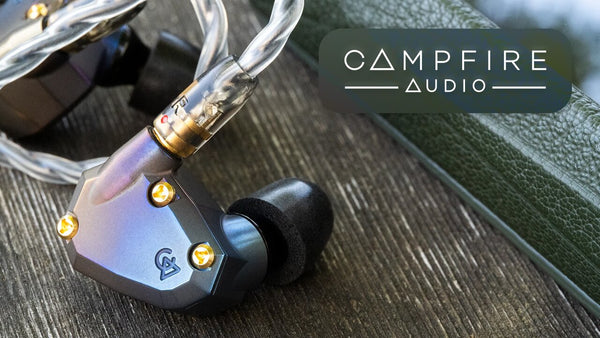
BY: DREW BAIRD P.E. |
Read Time: Approx. 12 min. The Art of Joyful Sound In a world where most high-end audio companies prioritize function... Read more

BY: DREW BAIRD P.E. |
Read Time: Approx. 10 min. TL;DR: Sub-$2K Flagship Performance: Both the U6t and U12t IEMs deliver exceptional value under $2,000... Read more

BY: DREW BAIRD P.E. |
Read Time: Approx. 16 min. When Audio Giants Collide–Astell&Kern x 64 Audio's $3k Masterpiece Every audiophile has that dream collaboration,... Read more

BY: DREW BAIRD P.E. |
Read Time: Approx. 11 min. TL;DR Music servers centralize your entire digital collection, storing and organizing ripped CDs, purchased digital... Read more

BY: DREW BAIRD P.E. |
Read Time: Approx. 20 min. TL;DR First tubeless IEM design with proprietary TIA (Tubeless In-Ear Audio) technology for natural sound... Read more
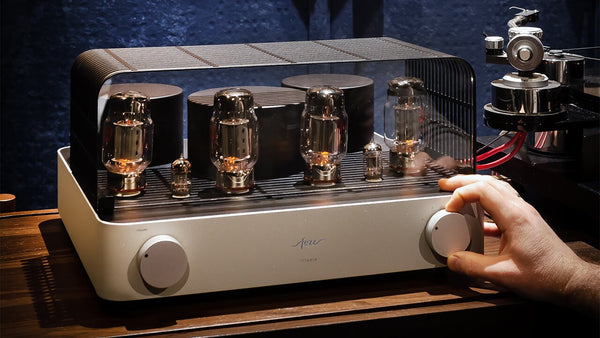
BY: DREW BAIRD P.E. |
Read Time: Approx. 17 min. Combines traditional vacuum tube warmth with cutting-edge toroidal transformer innovation Clean, minimalist design aesthetic that... Read more

BY: DREW BAIRD P.E. |
Read Time: Approx. 12 min. The Art of Joyful Sound In a world where most high-end audio companies prioritize function... Read more

BY: DREW BAIRD P.E. |
Read Time: Approx. 10 min. TL;DR: Looking for the best headphones for music quality? This guide from Moon Audio breaks down... Read more
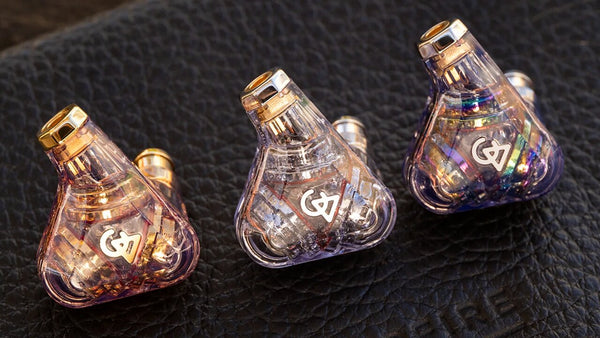
BY: DREW BAIRD P.E. |
Read Time: Approx. 12 min. TL;DR Featuring three 10mm dynamic drivers in a unique triangular chamber, delivering powerful, bass-focused sound... Read more
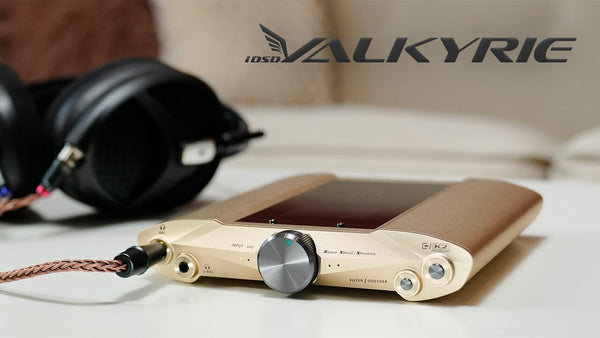
BY: DREW BAIRD P.E. |
Read Time: Approx. 15 min. TL;DR: iFi Audio's most powerful portable USB DAC Headphone Amplifier with up to 5,700mW peak... Read more

BY: DREW BAIRD P.E. |
Read Time: Approx. 10 min. TL;DR: IEMs pull out more detail thanks to better isolation and closer driver placement. Driver... Read more
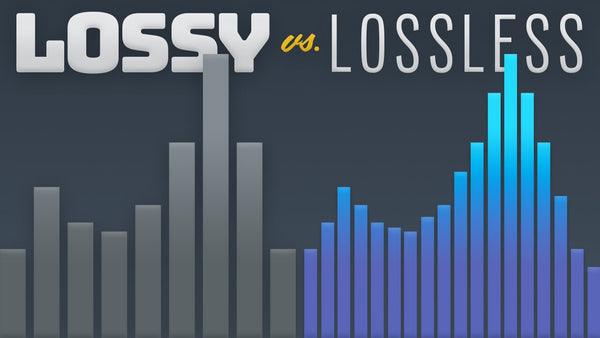
BY: DREW BAIRD P.E. |
Read Time: Approx. 10 min. In today's digital world, sound is everywhere—whether you're streaming playlists, catching up on a podcast,... Read more

BY: DREW BAIRD P.E. |
Read Time: Approx. 9 min. TL;DR Preamplifiers are always necessary: They boost weak audio signals to line level for proper... Read more
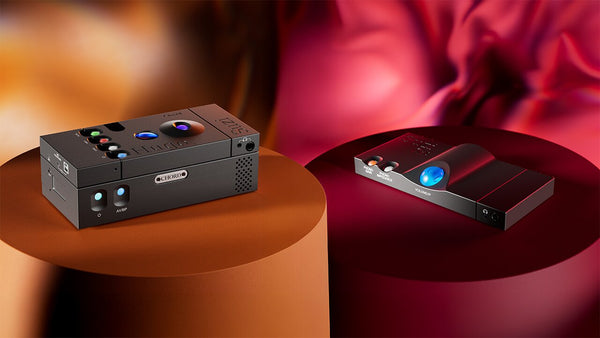
BY: DREW BAIRD P.E. |
Read Time: Approx. 9 min. TL;DR Stackable and modular design allows components to work independently or together as an integrated... Read more

BY: DREW BAIRD P.E. |
Read Time: Approx. 12 min. TL;DR You need BOTH a DAC and an Amplifier in every audio system: DAC handles... Read more
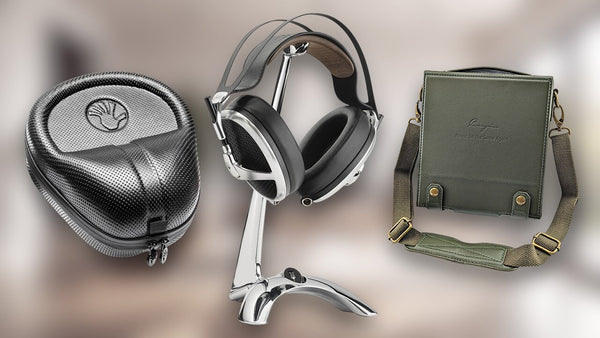
BY: DREW BAIRD P.E. |
Read Time: Approx. 10 min. Summary: Proper storage is essential for protecting your high-end audio gear and maximizing its performance... Read more

BY: DREW BAIRD P.E. |
Read Time: Approx. 10 min. TL;DR: Unlock your audiophile speakers' full potential with the right external DAC and amplifier. This guide... Read more

BY: DREW BAIRD P.E. |
Read Time: Approx. 15 min. TL;DR: iFi Audio's most powerful portable USB DAC Headphone Amplifier with up to 5,700mW peak... Read more

BY: DREW BAIRD P.E. |
Read Time: Approx. 12 min. TL;DR You need BOTH a DAC and an Amplifier in every audio system: DAC handles... Read more

BY: DREW BAIRD P.E. |
Read Time: Approx. 20 min. TL;DR First Astell&Kern DAP with full Android OS and Google Play Store access: Download any... Read more

BY: DREW BAIRD P.E. |
Read Time: Approx. 17 min. TL;DR Audiophile-grade sound quality with a harmonious midrange, precise imaging, and comfortable, lightweight construction Exceptional... Read more

BY: DREW BAIRD P.E. |
Come See Us in Booth 8101 Moon Audio is heading to the 14th annual Audio Expo North America (AXPONA) and... Read more

BY: DREW BAIRD P.E. |
Read Time: Approx. 10 min. TL;DR: IEMs pull out more detail thanks to better isolation and closer driver placement. Driver... Read more

BY: DREW BAIRD P.E. |
Read Time: Approx. 12 min. TL;DR You need BOTH a DAC and an Amplifier in every audio system: DAC handles... Read more

BY: DREW BAIRD P.E. |
Read Time: Approx. 10 min. TL;DR: Unlock your audiophile speakers' full potential with the right external DAC and amplifier. This guide... Read more

BY: DREW BAIRD P.E. |
Come See Us in Booth 8101 Moon Audio is heading to the 14th annual Audio Expo North America (AXPONA) and... Read more

BY: DREW BAIRD P.E. |
Read Time: Approx.30 min. Meet LINA: A New dCS System Purpose Built for Headphone Listeners In February 2020, I had... Read more

BY: DREW BAIRD P.E. |
Read Time: Approx. 12 min. The Art of Joyful Sound In a world where most high-end audio companies prioritize function... Read more

BY: DREW BAIRD P.E. |
Read Time: Approx. 10 min. TL;DR: Sub-$2K Flagship Performance: Both the U6t and U12t IEMs deliver exceptional value under $2,000... Read more

BY: DREW BAIRD P.E. |
Read Time: Approx. 16 min. When Audio Giants Collide–Astell&Kern x 64 Audio's $3k Masterpiece Every audiophile has that dream collaboration,... Read more

BY: DREW BAIRD P.E. |
Read Time: Approx. 11 min. TL;DR Music servers centralize your entire digital collection, storing and organizing ripped CDs, purchased digital... Read more

BY: DREW BAIRD P.E. |
Read Time: Approx. 20 min. TL;DR First tubeless IEM design with proprietary TIA (Tubeless In-Ear Audio) technology for natural sound... Read more

BY: DREW BAIRD P.E. |
Read Time: Approx. 17 min. Combines traditional vacuum tube warmth with cutting-edge toroidal transformer innovation Clean, minimalist design aesthetic that... Read more
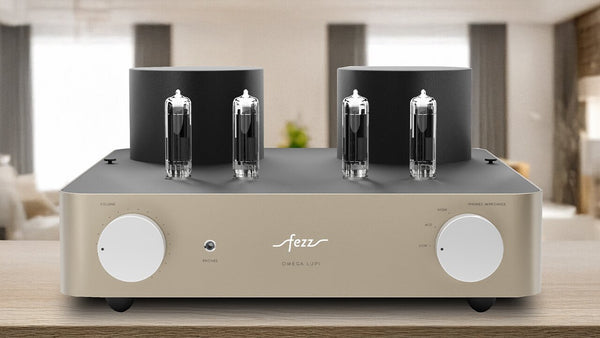
BY: DREW BAIRD P.E. |
Read Time: Approx. 15 min. TL;DR 7W per channel of sheer power driving even the most demanding headphones like the... Read more

BY: DREW BAIRD P.E. |
Read Time: Approx. 17 min. TL;DR Groundbreaking digital audio player that functions both as a premium portable DAP and as... Read more

BY: DREW BAIRD P.E. |
Read Time: Approx. 10 min. Open-Back Audiophile Grade Headphones for Everyday Listening If you've been chasing the perfect, spacious sound... Read more

BY: DREW BAIRD P.E. |
Come See Us in Booth 8101 Moon Audio is heading to the 14th annual Audio Expo North America (AXPONA) and... Read more

BY: DREW BAIRD P.E. |
Read Time: Approx. 10 min. In today's digital world, sound is everywhere—whether you're streaming playlists, catching up on a podcast,... Read more

BY: DREW BAIRD P.E. |
Read Time: Approx. 11 min. TL;DR Music servers centralize your entire digital collection, storing and organizing ripped CDs, purchased digital... Read more

BY: DREW BAIRD P.E. |
Read Time: Approx. 9 min. TL;DR Preamplifiers are always necessary: They boost weak audio signals to line level for proper... Read more

BY: DREW BAIRD P.E. |
TL;DR DAPs have captured the audiophile community as the ultimate portable companion for everyday listening, regardless of the scenario Astell&Kern... Read more

BY: DREW BAIRD P.E. |
Read Time: Approx. 12 min. TL;DR You need BOTH a DAC and an Amplifier in every audio system: DAC handles... Read more
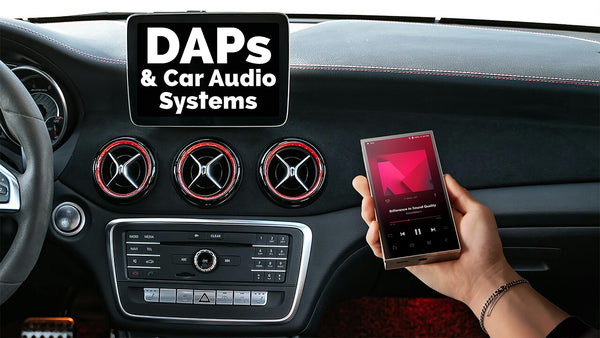
BY: DREW BAIRD P.E. |
Read Time: Approx. 18 min. TL;DR DAPs offer support for high-resolution audio formats (FLAC, DSD, WAV) and lossless playback that... Read more

BY: DREW BAIRD P.E. |
Read Time: Approx. 10 min. Summary: Proper storage is essential for protecting your high-end audio gear and maximizing its performance... Read more

BY: DREW BAIRD P.E. |
Read Time: Approx. 12 min. TL;DR You need BOTH a DAC and an Amplifier in every audio system: DAC handles... Read more

BY: DREW BAIRD P.E. |
Read Time: Approx. 10 min. Summary: Proper storage is essential for protecting your high-end audio gear and maximizing its performance... Read more

BY: DREW BAIRD P.E. |
Read Time: Approx. 15 min. TL;DR: iFi Audio's most powerful portable USB DAC Headphone Amplifier with up to 5,700mW peak... Read more

BY: DREW BAIRD P.E. |
Read Time: Approx. 10 min. TL;DR Mid-century modern aesthetic with walnut wood ear cups and radial PC-ABS grilles inspired by... Read more

BY: DREW BAIRD P.E. |
Read Time: Approx. 10 min. Summary: Proper storage is essential for protecting your high-end audio gear and maximizing its performance... Read more

BY: DREW BAIRD P.E. |
Read Time: Approx. 10 min. TL;DR: College students and young audiophiles need headphones that balance high-fidelity sound with portability, durability, and... Read more

BY: DREW BAIRD P.E. |
Read Time: Approx. 10 min. TL;DR: Looking for the best headphones for music quality? This guide from Moon Audio breaks down... Read more

BY: DREW BAIRD P.E. |
Read Time: Approx. 15 min. TL;DR: iFi Audio's most powerful portable USB DAC Headphone Amplifier with up to 5,700mW peak... Read more

BY: DREW BAIRD P.E. |
Read Time: Approx. 10 min. Open-Back Audiophile Grade Headphones for Everyday Listening If you've been chasing the perfect, spacious sound... Read more
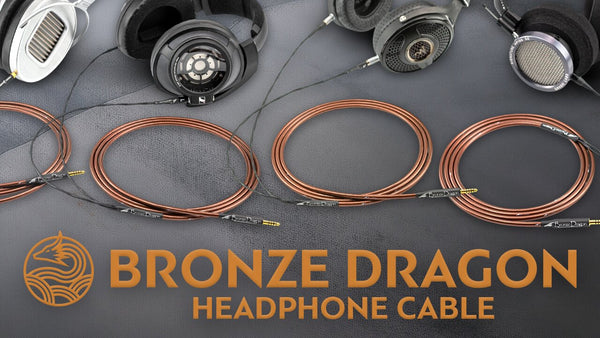
BY: DREW BAIRD P.E. |
Unveiling Our Latest Dragon Audio Cable Innovation Discover our newest Dragon Cable innovation, the Bronze Dragon Headphone Cable. Featuring groundbreaking... Read more

BY: DREW BAIRD P.E. |
Read Time: Approx. 8 min. Recommendations for Optimal Sound Quality All audio cables require a period of break-in for the... Read more

BY: DREW BAIRD P.E. |
Unveiling Our Latest Dragon Audio Cable Innovation Discover our newest Dragon Cable innovation, the Bronze Dragon Headphone Cable. Featuring groundbreaking... Read more

BY: DREW BAIRD P.E. |
Unveiling Our Latest Dragon Audio Cable Innovation Discover our newest Dragon Cable innovation, the Bronze Dragon Headphone Cable. Featuring groundbreaking... Read more

BY: DREW BAIRD P.E. |
Read Time: Approx. 8 min. Recommendations for Optimal Sound Quality All audio cables require a period of break-in for the... Read more

BY: DREW BAIRD P.E. |
Read Time: Approx. 10 min. TL;DR: Unlock your audiophile speakers' full potential with the right external DAC and amplifier. This guide... Read more

BY: DREW BAIRD P.E. |
Read Time: Approx. 20 min. TL;DR Sound quality rivals audiophile-grade wired headphones–refined, controlled with bass precision and clarity Supports high-resolution... Read more

BY: DREW BAIRD P.E. |
Unveiling Our Latest Dragon Audio Cable Innovation Discover our newest Dragon Cable innovation, the Bronze Dragon Headphone Cable. Featuring groundbreaking... Read more

BY: DREW BAIRD P.E. |
Read Time: Approx. 8 min. Recommendations for Optimal Sound Quality All audio cables require a period of break-in for the... Read more

BY: DREW BAIRD P.E. |
Read Time: Approx. 12 min. TL;DR You need BOTH a DAC and an Amplifier in every audio system: DAC handles... Read more

BY: DREW BAIRD P.E. |
Read Time: Approx. 12 min. TL;DR You need BOTH a DAC and an Amplifier in every audio system: DAC handles... Read more

BY: DREW BAIRD P.E. |
Come See Us in Booth 8101 Moon Audio is heading to the 14th annual Audio Expo North America (AXPONA) and... Read more

BY: DREW BAIRD P.E. |
Read Time: Approx. 17 min. TL;DR Groundbreaking digital audio player that functions both as a premium portable DAP and as... Read more

BY: DREW BAIRD P.E. |
Read Time: Approx. 12 min. TL;DR You need BOTH a DAC and an Amplifier in every audio system: DAC handles... Read more

BY: DREW BAIRD P.E. |
Come See Us in Booth 8101 Moon Audio is heading to the 14th annual Audio Expo North America (AXPONA) and... Read more

BY: DREW BAIRD P.E. |
Read Time: Approx. 10 min. TL;DR: Sub-$2K Flagship Performance: Both the U6t and U12t IEMs deliver exceptional value under $2,000... Read more

BY: DREW BAIRD P.E. |
Read Time: Approx. 20 min. TL;DR First Astell&Kern DAP with full Android OS and Google Play Store access: Download any... Read more

BY: DREW BAIRD P.E. |
Read Time: Approx. 17 min. TL;DR Groundbreaking digital audio player that functions both as a premium portable DAP and as... Read more

BY: DREW BAIRD P.E. |
Read Time: Approx. 10 min. In today's digital world, sound is everywhere—whether you're streaming playlists, catching up on a podcast,... Read more

BY: DREW BAIRD P.E. |
Come See Us in Booth 8101 Moon Audio is heading to the 14th annual Audio Expo North America (AXPONA) and... Read more

BY: DREW BAIRD P.E. |
Read Time: Approx. 12 min. The Art of Joyful Sound In a world where most high-end audio companies prioritize function... Read more

BY: DREW BAIRD P.E. |
Read Time: Approx. 15 min. TL;DR: iFi Audio's most powerful portable USB DAC Headphone Amplifier with up to 5,700mW peak... Read more

BY: DREW BAIRD P.E. |
Read Time: Approx. 10 min. Open-Back Audiophile Grade Headphones for Everyday Listening If you've been chasing the perfect, spacious sound... Read more
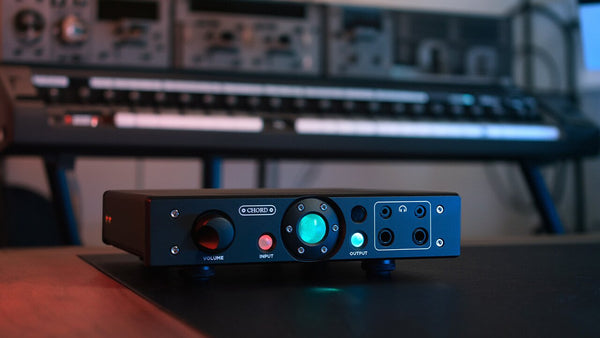
BY: DREW BAIRD P.E. |
Read Time: Approx. 12 min. TL;DR: Versatile audio solution that can power up to four headphones simultaneously and drive passive... Read more

BY: DREW BAIRD P.E. |
Read Time: Approx. 11 min. TL;DR Music servers centralize your entire digital collection, storing and organizing ripped CDs, purchased digital... Read more

BY: DREW BAIRD P.E. |
Read Time: Approx. 9 min. TL;DR Stackable and modular design allows components to work independently or together as an integrated... Read more
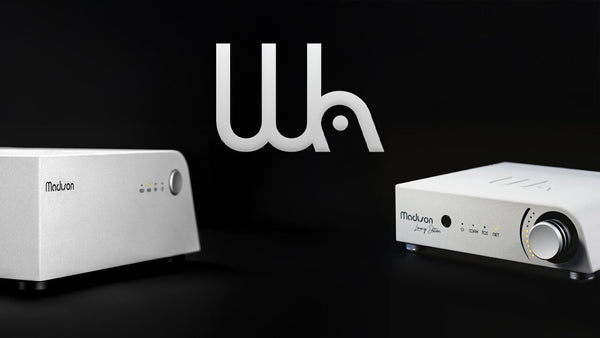
BY: DREW BAIRD P.E. |
Read Time: Approx. 21 min. TL;DR Swiss-made reference-level components that deliver $20,000+ performance at under $10,000 prices Wattson Music App... Read more

BY: DREW BAIRD P.E. |
Read Time: Approx. 18 min. TL;DR DAPs offer support for high-resolution audio formats (FLAC, DSD, WAV) and lossless playback that... Read more

BY: DREW BAIRD P.E. |
Read Time: Approx. 12 min. Discover the Leaders in Portable HiFi Audio - Not just your average MP3 players Astell&Kern... Read more

BY: DREW BAIRD P.E. |
Read Time: Approx. 25 min. Investment in Sound: Aurender's Price-to-Performance Ratio Across Models Beginning with its first music server nearly... Read more
